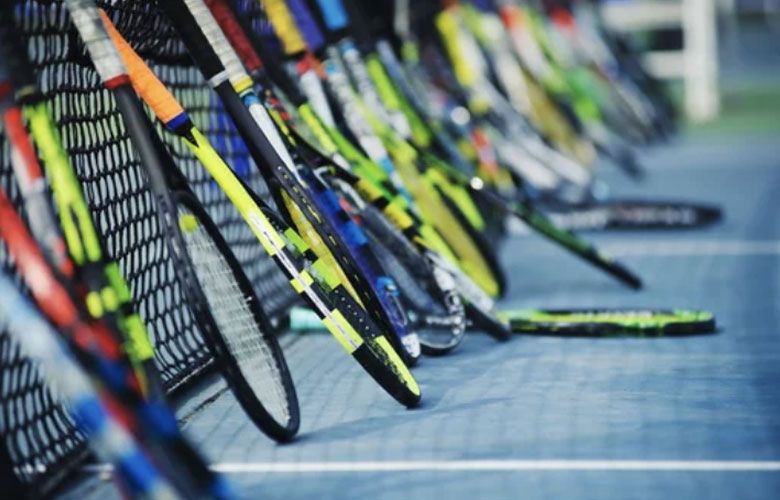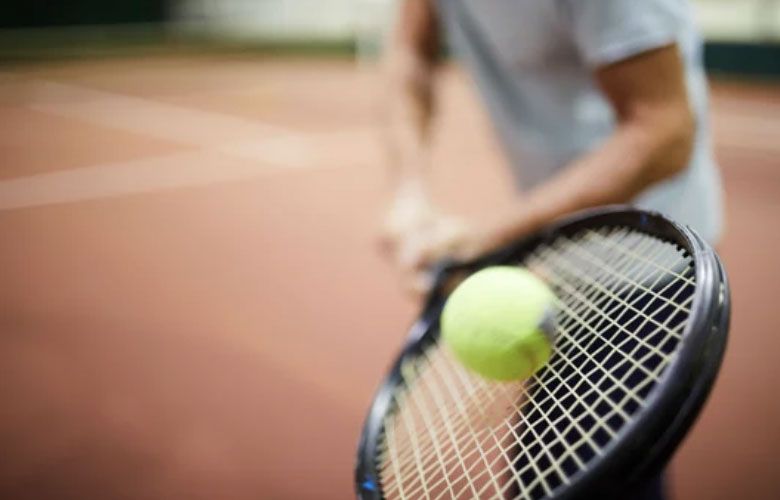How to Find the Perfect Racquet
Tennis is a wonderful sport, the sport of a lifetime! But to enjoy yourself, you want to get started with a racquet that is comfortable, confidence-inspiring, and fun to play with. Everyone has different swing speeds, skill sets, and strengths and weaknesses. What might work for an ex-college player is not ideal for someone who is learning how to play tennis for the first time. Below is a guide to help you find the best racquet for your needs, depending on a few prerequisites. Once you narrow down your options, test them out before you decide on the perfect racquet with our try before you buy program.
Beginners
 If you are heading to the courts for the first time, you want a racquet with a large sweet spot, that doesn’t punish you when you mishit a ball. Consider a head size between 100-110 sq in for a higher margin of error.
If you are heading to the courts for the first time, you want a racquet with a large sweet spot, that doesn’t punish you when you mishit a ball. Consider a head size between 100-110 sq in for a higher margin of error.
The tendency for beginners is to go with a super light racquet, but you sacrifice a lot of power and stability by going too light. The better option is a racquet around 10-10.5 ounces (unstrung).
This weight provides a nice balance of mobility and stability. The most common racquet length is 27 inches, and though there are longer models available, the standard 27 is the best place to start.
The beam thickness affects how powerful and aerodynamic a racquet is. You want a tapered beam, which is thickest in the center of the racquet head for stability and power but slimmer everywhere else, to be as maneuverable as possible. The most popular beam/cross-section these days is the 23-26-23mm.
The most common string pattern is 16 main strings and 19 cross strings. This configuration can help you create spin, power, and control.
A racquet’s stiffness, or flex, is a measurement of how much the racquet bends when you hit the ball. This also is a strong representation of how arm-friendly a racquet is. A flex rating between 60-66 is a nice range because it is not too firm, and not too flexible. A 100% graphite racquet is a MUST as far as performance goes. Fiberglass and composite racquets have very low prices, but they are not as durable and stable as graphite, and the performance gap is tremendous.
As far as balance goes, a lighter racquet trends closer to even balance, or just slightly headlight to make sure the racquet has decent stability.
If you have played a lot of tennis in the past, you probably have an idea of what you are looking for in a racquet. We grouped them into four searchable categories: Power, Spin, Comfort, and Control. Happy hitting!
Great Beginner Racquets
Great Deals for Beginners
Intermediates
 You have played enough tennis to know what you like and don’t like. You have probably taken a few lessons. Consider a head size between 97-102, as you are more consistent than a beginner and can swing the racquet faster as well. Consider a racquet from 10.4 to 10.6 ounces because you are playing against more consistent pace. If you are consistent, but you struggle to create your own power, shop for a racquet with a flex rating closer to 70. If you struggle with tennis elbow, make the move to a more flexible racquet (around 60) to take some stress off of the elbow If you are over-hitting too many shots, consider a constant beam racquet (the same frame thickness for the entire length of the racquet). This will add a bit more control and should help you cut down on mistakes. The intermediate level is often where players begin to break more strings. You can use a thicker string gauge, but you also might consider a denser string pattern like 16x20 or 18x20 which will increase the life of your strings. Try and use the heaviest racquet that you can swing comfortably. Many intermediate players are spending more time at the net, especially in doubles, and a racquet with a more head light balance makes volleying much easier. A nice middle ground is 4 points head light, which still gives some extra pop from the back of the court and enough mobility when you get to the net.
You have played enough tennis to know what you like and don’t like. You have probably taken a few lessons. Consider a head size between 97-102, as you are more consistent than a beginner and can swing the racquet faster as well. Consider a racquet from 10.4 to 10.6 ounces because you are playing against more consistent pace. If you are consistent, but you struggle to create your own power, shop for a racquet with a flex rating closer to 70. If you struggle with tennis elbow, make the move to a more flexible racquet (around 60) to take some stress off of the elbow If you are over-hitting too many shots, consider a constant beam racquet (the same frame thickness for the entire length of the racquet). This will add a bit more control and should help you cut down on mistakes. The intermediate level is often where players begin to break more strings. You can use a thicker string gauge, but you also might consider a denser string pattern like 16x20 or 18x20 which will increase the life of your strings. Try and use the heaviest racquet that you can swing comfortably. Many intermediate players are spending more time at the net, especially in doubles, and a racquet with a more head light balance makes volleying much easier. A nice middle ground is 4 points head light, which still gives some extra pop from the back of the court and enough mobility when you get to the net.
Great Intermediate Racquets
Great Deals on Intermediate Racquets
Advanced
 Advanced players generally have some established likes and dislikes. You can generate your own power, and your technique is consistently sound. Control is what will separate you from your opponent. These racquets are generally 10.8 ounces and up and they trend more head light than the other categories. Some advanced players prefer the precision provided by a thin beam (20-22mm), while others just go with a heavier version of a tapered design they are familiar with. The 18x20 string pattern reduces string movement and will provide a more precise response, albeit with less power.
Advanced players generally have some established likes and dislikes. You can generate your own power, and your technique is consistently sound. Control is what will separate you from your opponent. These racquets are generally 10.8 ounces and up and they trend more head light than the other categories. Some advanced players prefer the precision provided by a thin beam (20-22mm), while others just go with a heavier version of a tapered design they are familiar with. The 18x20 string pattern reduces string movement and will provide a more precise response, albeit with less power.
Great Racquets for Advanced Players
Great Deals on Racquets for Advanced Players
Ultimately you want a racquet that makes you confident and comfortable when a match gets tight. There are so racquets available now, and it is best to take advantage of our Demo Program to make sure you get the best fit for your game.
For more information, we have an updated version of this article. Click Here
